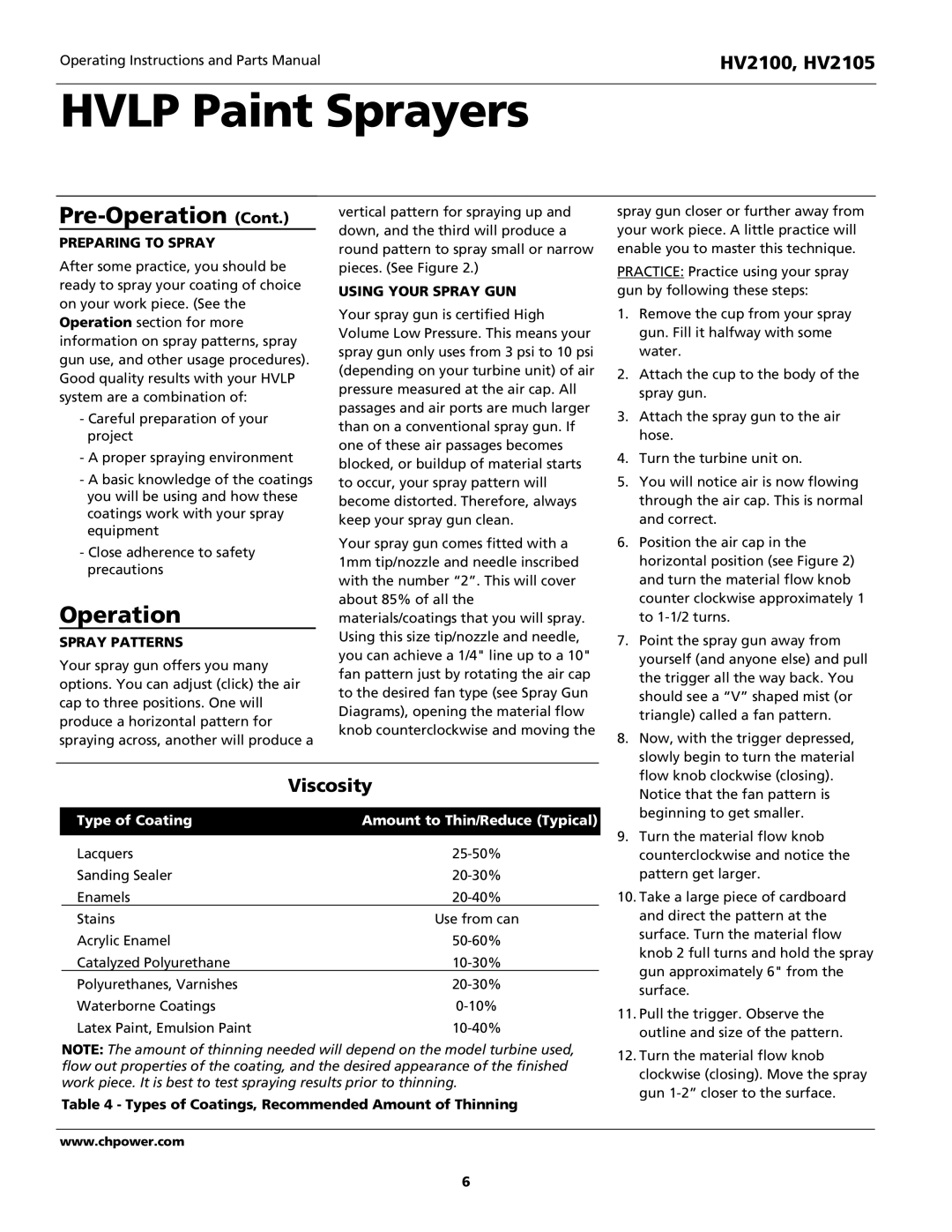HV2100, HV2105 specifications
The Campbell Hausfeld HV2105 and HV2100 models represent a significant advancement in airless paint sprayer technology. These units are engineered for homeowners and DIY enthusiasts seeking efficient, high-quality painting solutions. Both models deliver a user-friendly experience while ensuring professional results, making them ideal for various painting projects around the home.The HV2105 and HV2100 feature a powerful motor that enables consistent paint flow, ensuring uniform coverage on surfaces. The HV2105 is specially designed for small to medium-sized projects, such as fences, furniture, or accent walls, while the HV2100 is suitable for larger applications, including exterior walls and large indoor spaces. The adjustable pressure settings allow users to customize the paint flow, catering to different project requirements and types of coatings.
One of the standout features of these models is their advanced technology, which eliminates the need for thinning paint. This not only saves time but also ensures that users can achieve a smooth finish without the hassle of preparing the paint. Additionally, the airless design provides fast operation, allowing users to complete their projects more quickly than traditional painting methods.
Another key characteristic of the HV2105 and HV2100 is their lightweight and portable construction. These sprayers weigh significantly less than many conventional models, making them easy to maneuver and transport from one location to another. This is particularly beneficial for projects that require mobility or for users who may need to work on scaffolding or ladders.
The ergonomic design of the spray gun enhances comfort during use, reducing fatigue and strain on the user’s hands and arms. Furthermore, both models come equipped with an easy-clean system that simplifies maintenance after use, ensuring longevity and optimal performance over time.
In summary, the Campbell Hausfeld HV2105 and HV2100 airless paint sprayers are excellent choices for anyone looking to achieve a professional finish with ease. Their powerful motor, adjustable settings, lightweight design, and user-friendly features combine to make painting projects more efficient and enjoyable. Whether tackling small touch-ups or larger painting jobs, these sprayers stand out in the competitive market, delivering reliability and quality that users can trust.

